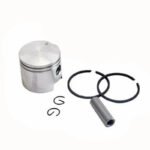Agricultural machinery is an essential investment for farmers and landscapers. Maintaining your equipment properly not only ensures its longevity but also boosts its performance, saving you time and money in the long run. For the Sri Lankan market, where farming plays a vital role, extending the life of your machinery is crucial. Here, we’ll share practical tips on how to keep your equipment in top shape.

1. Regular Inspections
Routine inspections are the cornerstone of effective maintenance. Before and after using your machinery, take the time to check for any visible damage, wear, or loose parts. Look for signs of oil leaks, cracks, and rust. Identifying problems early can prevent minor issues from becoming major repairs.
2. Keep It Clean
Dirt, dust, and debris can accumulate quickly on your equipment, especially in Sri Lanka’s varied climate. Regular cleaning helps prevent these elements from causing damage. Use a pressure washer to clean your machinery thoroughly, and ensure all parts are dry before storage to prevent rust and corrosion.
3. Follow the Manufacturer’s Maintenance Schedule
Each piece of machinery comes with a user manual that includes a recommended maintenance schedule. Adhering to these guidelines ensures that your equipment receives the care it needs. This schedule typically includes oil changes, filter replacements, and other essential maintenance tasks.
4. Proper Lubrication
Lubrication is key to reducing friction and wear on moving parts. Follow the manufacturer’s recommendations for the type and frequency of lubrication. Be sure to lubricate bearings, chains, gears, and other components to keep them operating smoothly.
5. Monitor Fluid Levels
Keeping an eye on fluid levels, including oil, coolant, and hydraulic fluid, is essential for the smooth operation of your machinery. Low or dirty fluids can cause significant damage. Check levels regularly and top up or replace fluids as needed.
6. Use Genuine Replacement Parts
When it’s time to replace parts, always opt for genuine parts from trusted suppliers like LakParts. Authentic parts are designed to fit perfectly and work efficiently with your machinery, reducing the risk of further damage.
7. Store Equipment Properly
Proper storage is crucial to protect your machinery from the elements. In Sri Lanka, where weather conditions can be unpredictable, storing your equipment in a sheltered, dry place is important. Use covers or tarps to shield your machinery from rain and sun exposure if indoor storage is not available.
8. Train Your Operators
Ensuring that all operators are adequately trained in the use and maintenance of your machinery is vital. Proper operation minimizes the risk of damage and ensures that maintenance tasks are performed correctly.
9. Maintain a Maintenance Log
Keeping a detailed log of all maintenance activities helps you stay organized and ensures that no task is overlooked. Record the dates of inspections, oil changes, part replacements, and any repairs. This log will also be useful for troubleshooting issues and planning future maintenance.
10. Regularly Update and Upgrade
Technology and machinery are constantly evolving. Stay updated with the latest advancements in agricultural equipment and maintenance practices. Upgrading your machinery when necessary can improve efficiency and extend its lifespan.
By implementing these maintenance tips, you can significantly prolong the life of your agricultural equipment, ensuring it remains reliable and efficient. Regular maintenance not only enhances performance but also saves you from costly repairs and downtime, allowing you to focus on productive farming.
Visit lakparts.com for more information and to explore our products! Whether you need high-quality replacement parts or expert advice, LakParts has everything you need to keep your machinery running smoothly.




